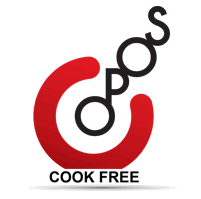General Pointers – Dos and Don’ts

- All OPOS recipes have been done using standardised equipment. Whenever, the recipe mentions “HIGH”, it refers to this setting. This will vary depending on the heat source. So, please complete Lesson 1, to ascertain the “HIGH” setting for your equipment, Lesson 2, to understand PressureBaking – the core technique upon which all other OPOS techniques are built, followed by the other lessons under lessons, before proceeding further.
- When a recipe calls for (X)Wh or (Y)mins, whichever happens first is considered.
- While layering, always spread the ingredients evenly.
- Do not try to scale up recipes without understanding the concept of pressure baking and the science behind it. Scaling up would require a few tweaks to the measure of ingredients and hence is not recommended if you are new to OPOS. Until you are comfortable with the techniques, please repeat the dishes as many times as needed.
- Any recipe that calls for more than 1/2C of water while layering, becomes a dump-all-in-a-cooker recipe, frowned upon in OPOS.
- Whenever a recipe calls for Retained Heat Cooking (like Kesari, Upma), ensure the ingredients are swiftly mixed in and the PressureBaker is closed immediately to ensure maximum heat retention.
- Whenever water is mentioned, it is water at room temperature.
- It is recommended to soak and drain the legumes/lentils and discard the soaked/drained water before cooking them.
- The recipes listed here are dumbed down versions of recipes we actually use. Once you gain confidence, you can increase the heat and reduce water to unlock the full power of PressureBaking.
Prevention of Burning
Buffer Layer
In OPOS, most dishes are cooked in high heat for a short period of time, hence there is a possibility of burning if not done right. To mitigate this, a buffer, mostly water/oil is used as Layer 1.
In OPOS, ingredients are cooked in their own juices. The water measure mentioned are for fresh vegetables. If vegetables are dry/old/refrigerated/not tender, an extra bit of water needs to be added to the buffer layer. (For instance, refrigerated cut vegetables dry out as the refrigerator acts as a dehydrator. These need extra water in Layer 1).
Layering done right
Whenever a recipe calls for layering of spice powders/pastes, ensure they are layered over the vegetables/starches/meat, as a top layer. This will prevent them from seeping down/touching the PressureBaker base and burning. If the spice pastes turn out to be runny, place a small cup on the top layer and add the spice paste to it.
No-water Recipes
Understand and get comfortable with recipes that use water in Layer 1 before attempting no-water recipes
Detect Burning
At the faintest smell of burning or sight of white smoke, turn the heat source off and release pressure if any. Transfer the contents. Do not scrape/consume the black/charred bits if any. This will not affect the flavor of the output.
Avoiding Overcooking and Undercooking
If vegetables are overcooked, try the following steps to avoid it the next time:
- Reduce the cooking time (by cooking them for one whistle less)
- Cut them thicker.
- Release pressure after cooking if you had let pressure settle
If vegetables are undercooked, try the following suggestions:
- Increase the cooking time (by cooking them for one whistle more) and release pressure.
- Cut them thinner.
- Mix and keep closed in the retained heat, after releasing pressure.
.
While doing One Shot Thalis:
- Balance cooking time by choosing the right vegetables.
- Avoid pairing watery vegetables with starchy ones in different zones, since they need different types of buffer.
- Avoid vegetables like okra/eggplant/cauliflower/spinach along with legumes or meat in one shot thalis.
- Avoid cooking vegetables along with tough meats like beef/mutton/pork.
- To avoid overcooking, use seafood in PIP when pairing with other meats.
- Use smaller chunks of meat. Marinate longer/ preferably overnight to tenderize the meat. This also enhances the flavor.
- Pat dry the meat/seafood to avoid water leakage or refrigerate it uncovered overnight to minimise water leakage.
- Do not overfill the pot. Its not advisable to fill the pot with more than 4C of vegetables (including the spice pastes). This can lead to extended cooking time of over 5 minutes which overcooks vegetables.
- Adjust buffer according to the dishes chosen. If the actual recipe calls for onions and tomatoes in buffer layer, while the other two dishes need water as buffer, it would be better to use caramelized bases instead of layering onions-tomatoes along with water.
- Use appropriate cut-size variation of vegetables to balance their cooking time.

